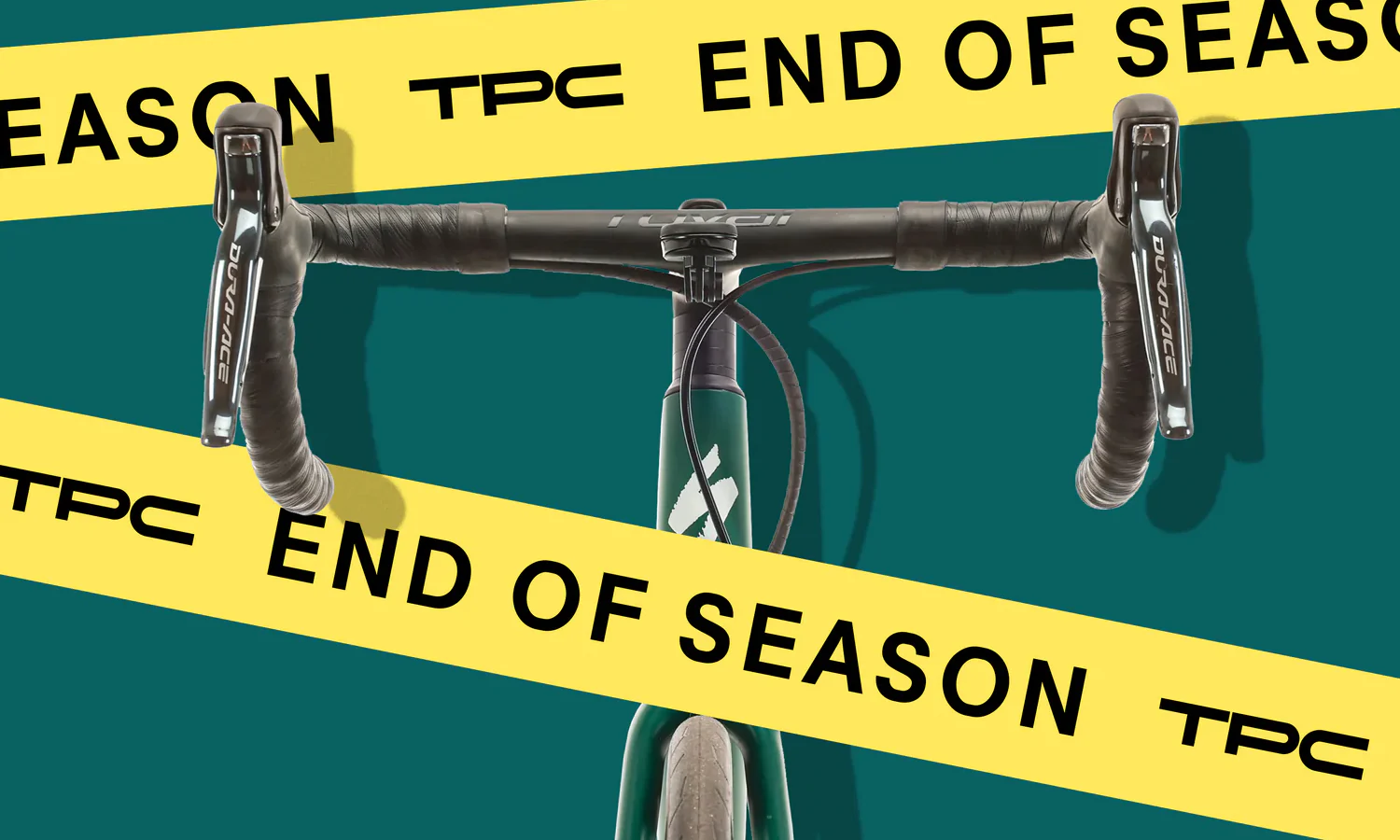Since it became the first company to mass-produce a mountain bike in 1982, giving the bike world the venerable Stumpjumper, Specialized has been a top option for off-road bicycles.
Today, Specialized offers literally every type of mountain bike imaginable. With so many to choose from, how will you know which Specialized is right for you? In this overview, we’ll run through the top models of the Specialized lineup, so you can make an informed decision when buying your next mountain bike.
For more information on mountain bikes see our Mountain Bike Buyer’s Guide.
Specialized XC bikes
XC (a.k.a. cross-country) mountain bikes are lighter, easier to pedal, and have quick and responsive handling. They are good for riders focused on fitness, speed, climbing, endurance, long distance rides, and XC racing.
Specialized Epic

Frame material: Carbon or aluminum
Wheel size: 29”
Travel: 100mm front / 100mm rear
Who it's for: Cross-country racers. Climbing- and endurance-focused riders who want the extra compliance of rear suspension.
The Specialized Epic is one of the most popular and successful XC race bikes of all time. The Epic is a lightweight 100mm full-suspension bike. It uses Specialized’s proprietary Brain damper in the rear suspension, which keeps the suspension stiff and efficient for pedaling but opens upon impact to allow active suspension motion. This means a rider doesn't have to think about locking and unlocking his or her suspension during a race. Some Epic builds also use the Brain damper in the fork to provide a complete front and rear pedaling platform. The newest version of the Epic also has slightly more progressive geometry to improve its downhill performance.
Related Bikes: Era
The Era was the women’s specific version of the Epic. It has been discontinued since 2018.
Specialized Epic Hardtail
Frame material: Carbon
Wheel size: 29”
Travel: 100mm front
Who it's for: Cross-country racers and climbing- and endurance-focused riders who want the light weight and efficiency of a hardtail.
The Specialized Epic Hardtail is the lightest XC race bike Specialized offers. In fact the frame is also the lightest that Specialized produces. The Epic Hardtail is designed to dominate on the climbs. It also performs on smooth and flowy terrain, and during hard sprint efforts. Some builds are available with the Brain damper in the fork to provide the most efficient pedaling platform possible. Like the new Epic, the Epic Hardtail features more progressive geometry to improve its downhill performance.
Related Bikes: Stumpjumper Hardtail
The Stumpjumper Hardtail is the predecessor to the Epic Hardtail. The Stumpjumper Hardtail was replaced by the Epic Hardtail in 2017.
Specialized Chisel
Frame material: Aluminum
Wheel size: 29”
Travel: 100mm front - 90mm front (size small)
Who it's for: Cross-country racers on a budget and novice to intermediate riders interested in fitness and endurance.
The Specialized Chisel utilizes an aluminum frame to give aspiring XC racers and new riders a reliable and affordable point of entry. The frame is heavier than the Epic hardtail but much cheaper and robust. The geometry and handling match the Epic Hardtail, giving riders a good platform for progressing their riding.
Specialized Epic Evo
Frame material: Carbon or aluminum
Wheel size: 29”
Travel: 120mm front / 100mm rear
Who it's for: Cross-country riders who want a light-duty trail bike with the efficiency and speed of an XC race bike.
The Specialized Epic Evo a progressive XC bike, meaning it has been modified to be less race-focused and more capable out on the trail. This is achieved by swapping the 100mm-travel fork to a longer-travel 120mm model. The fork is stiffer and it handles better when taking big hits in rough terrain. The taller fork also slacks out the head tube slightly to improve downhill handling. Knobbier trail tires and a dropper post also make the Epic Evo capable for aggressive riding. It is the ideal bike for riders who want the climbing benefits of an XC bike, but desire something slightly more fun and confidence-inspiring when railing it back downhill.
Specialized trail bikes
Trail mountain bikes are all-rounders that can handle uphills as well as downhills. They are usually the best choice for the majority of riders looking to have fun on a variety of trails.
Specialized Fuse
Frame material: Aluminum
Wheel size: 27.5+
Travel: 120mm front
Who it's for: Novice to intermediate trail riders on a budget, looking for a solid, fun, uncomplicated bike. Great for experts looking to sharpen skills or make technical trails more exciting.
The Specialized Fuse utilizes 27.5+ wheels and tires to create a fun and capable platform that will appeal to many trail riders. "Plus" tires increase traction and comfort on loose and rough terrain. Their stability can also inspire more confidence in beginner riders. A 120mm-travel fork makes the Fuse plenty capable on most trails, while the hardtail design keeps the whole package simple, easy to maintain, affordable, and fun.
Related Bikes: Carve / Crave
The Carve (later renamed the Crave) is the predecessor to the Fuse. The Carve and Crave were replaced by the Fuse in 2019.
To learn more about the benefits of 27.5+ tires see our Plus Tire Review.
Specialized Stumpjumper ST (discontinued)
Frame material: Carbon or aluminum
Wheel size: 27.5” or 29”
Travel: 130mm front / 130mm rear (27.5”); 130mm front / 120mm rear (29”)
Who it's for: Trail riders looking for a versatile bike that pedals very well on climbs and long rides, but has the travel and geometry to outperform an XC bike on descents and technical trails.
The Specialized Stumpjumper ST takes the versatile Stumpjumper platform and reduces the travel. The ST stands for “short travel.” This leads to a bike that is an ideal blend of uphill speed and downhill performance. The reduced travel combined with the Stumpjumper ST’s steeper geometry means the bike will feel more responsive and efficient than the standard Stumpjumper, a desirable trait for people who ride mellower trails. Some might see this bike as a do-it-all quiver killer. It’s the perfect intermediate choice for riders looking for something between the raciness of the Epic and the trail focus of the standard Stumpjumper.
The Stumpjumper ST has been discontinued after 2020. The new 2021+ Stumpjumper now replaces both the Stumpjumper ST and Stumpjumper with 130mm of rear travel and 29" wheels.
Related Bikes: Camber
The Camber is the predecessor to the Stumpjumper ST. It was replaced by the Stumpjumper ST in 2018.
Specialized Stumpjumper
Frame material: Carbon or aluminum
Wheel size: 29”
Travel: 140mm front / 130mm rear
Who it's for: Trail riders looking for a versatile bike that can effectively handle technical and gnarly terrain while still pedaling well on climbs and longer rides.
The Specialized Stumpjumper has been a staple of Specialized’s lineup since 1981, but a lot has changed since then. Today, it is the quintessential trail bike, able to handle singletrack that ranges from smooth and flowy to steep and technical. It’s not too big to pedal all day, and when the trail turns fast and gnarly, it can confidently ride it out. It won’t be as fast on climbs and long-distance rides as the ultra-light and efficient Epic, and the rear end doesn't feel as plush and forgiving as the long-travel Enduro, but it bridges the gap between the two as the ultimate trail bike.
The Stumpjumper was redesigned in 2018 to be stiffer and lighter, with more travel and modern geometry that is longer and slacker. It was available with either 27.5" wheels and 150mm of travel front and rear or 29" wheels and 150mm travel front and 140mm travel rear.
For 2021, The Stumpjumper has 140mm of front travel and 130mm of rear travel. It replaces both the previous generation Stumpjumper and the Stumpjumper ST. It is only available with 29" wheels.
Read the authoritative guide to Specialized Stumpjumper mountain bikes.
Related bikes: Stumpjumper 6Fattie, Rhyme, Stumpjumper ST
The Stumpjumper 6Fattie is a 27.5+ wheel version of the Stumpjumper. It has the same geometry and travel as the previous generation Stumpjumper 29 (150mm front/135mm rear). The Rhyme is a women’s trail bike based on the previous generation Stumpjumper. It had 27.5, 6fattie, and 29 versions. Both have been discontinued since 2018.
Specialized enduro bikes
Enduro mountain bikes have more suspension travel, aggressive geometry geared toward downhill stability, and heavier, more rugged components. They are good for riding steep and technical terrain, bike parks, and enduro races.
Specialized Stumpjumper Evo
Frame material: Carbon or aluminum
Wheel size: 29”
Travel: 160mm (front - 150mm for S1 size) / 150mm (rear)
Who it's for: Downhill-focused trail riders and enduro racers interested in riding a bike with more progressive geometry.
The Specialized Stumpjumper Evo was an experiment to cross-breed a trail and enduro bike. Specialized gave it the most progressive geometry it has ever produced with an impressively slack 63.5-degree head tube and a very long reach. Downhillers have long touted the benefits of slack head tubes and long reach, and the Stumpjumper Evo takes that to the extreme. Specialized first produced the Stumpjumper Evo in aluminum to test the waters, and after surprising demand, it released a carbon version as well. The Stumpjumper Evo only comes in two sizes, S2 and S3, which roughly equate to medium and large. For many riders interested in pushing to boundaries of geometry to improve downhill performance, the Stumpjumper Evo is the bike they’ve been waiting for.
The previous generation Stumpjumper Evo was available with 27.5" wheels and 150mm front and rear or 29" wheels and 150mm travel front and 140mm rear.
For 2021, the Stumpjumper Evo has been updated to be even more capable with 29" wheels only and 160mm of travel front and 150mm rear. It has highly adjustable geometry to suit many different riders and downhill conditions.
Specialized Enduro
Frame material: Carbon or aluminum
Wheel size: 29”
Travel: 170mm (front) / 170mm (rear)
Who it's for: Downhill-focused trail riders and enduro racers who want a large amount of travel to handle big hits and gnarly terrain.
The Specialized Enduro is designed to be super-capable on downhills, while still being efficient enough to pedal back to the top of the hill. Long travel means the Enduro is able to hit jumps, drops, and rough trails with more comfort and a greater margin for error. This means riders can go faster and attack the trail harder. Though the Enduro can climb comfortably, that is not its primary purpose. Riders who choose the Enduro must be committed to sacrificing climbing ability in exchange for downhill performance. There’s very little downhill terrain that the Enduro can’t handle.
The previous generation Enduro offered both 27.5" and 29" wheels with 170mm and 160mm of travel respectively.
In 2020, the Enduro was redesigned with a new suspension layout, longer and slacker geometry, 170mm of suspension travel front and rear, and 29" wheels.
Specialized downhill bikes
Downhill mountain bikes are designed to go downhill as fast as possible — pretty straightforward, right? Downhill bikes don’t pedal or climb well and are best suited to lift-served downhill bike parks and shuttling.
Specialized Demo
Frame material: Carbon or aluminum
Wheel size: 27.5” or 29"
Travel: 200mm front / 200mm rear
Who it's for: Downhill racers, dedicated bike park riders, and freeriders who need the burliest mountain bike possible.
The Specialized Demo is uncompromising in its pursuit of downhill speed. It is not a bike that will be pedaled on normal trails without chairlifts unless riders are getting shuttled or are hiking to the top. But because the Demo has the most suspension travel available and purely downhill-focused geometry, it is hard to match on the roughest trails. It can be ridden hard and fast over gnarly terrain. The Demo has been developed to compete at the World Cup level. It is the choice of competitive downhill racers, daring freeriders, and park rats who like to spend their summers riding lift-accessed trails. Many riders feel that downhill bikes like the Demo greatly increase their confidence on the steepest and hardest trails around.
Specialized Fat Bikes
Fat bike tires are generally 3.8-5.0” wide. This ultra-wide, low-pressure rubber allows fat bikes to ride with some amount of “float,” meaning the tire doesn’t sink into the trail surface. This makes fat bikes ideal for riding in extreme conditions like snow and deep sand.
Specialized Fatboy
Frame material: Carbon or Aluminum
Wheel size: 26” Fat
Travel: Rigid
Who it's for: Riders who want to float through snow and sand, or anyone looking to experience the fun and traction of oversized tires.
The Specialized Fatboy comes with 4.6” tires to maximize float, and turn up the fun factor. Fat tires have become much more than just a novelty. Wide tires dominate in unique conditions like snow and deep sand, where normal bikes will lose traction or bog down. And now, some riders will even ride fat bikes in normal trail conditions, simply because the oversized tires provide ridiculous amounts of traction and comfort.
That’s a lot of bikes. If you still need help making a choice between all the different Specialized models, hit up a TPC Ride Guide at (866) 401-9636 to discuss our current mountain bike selection and find the bike that best suits your trail riding needs. Do you already have one of these bikes? Let us (and other cyclists) know in the comments what you love about your Specialized.
































